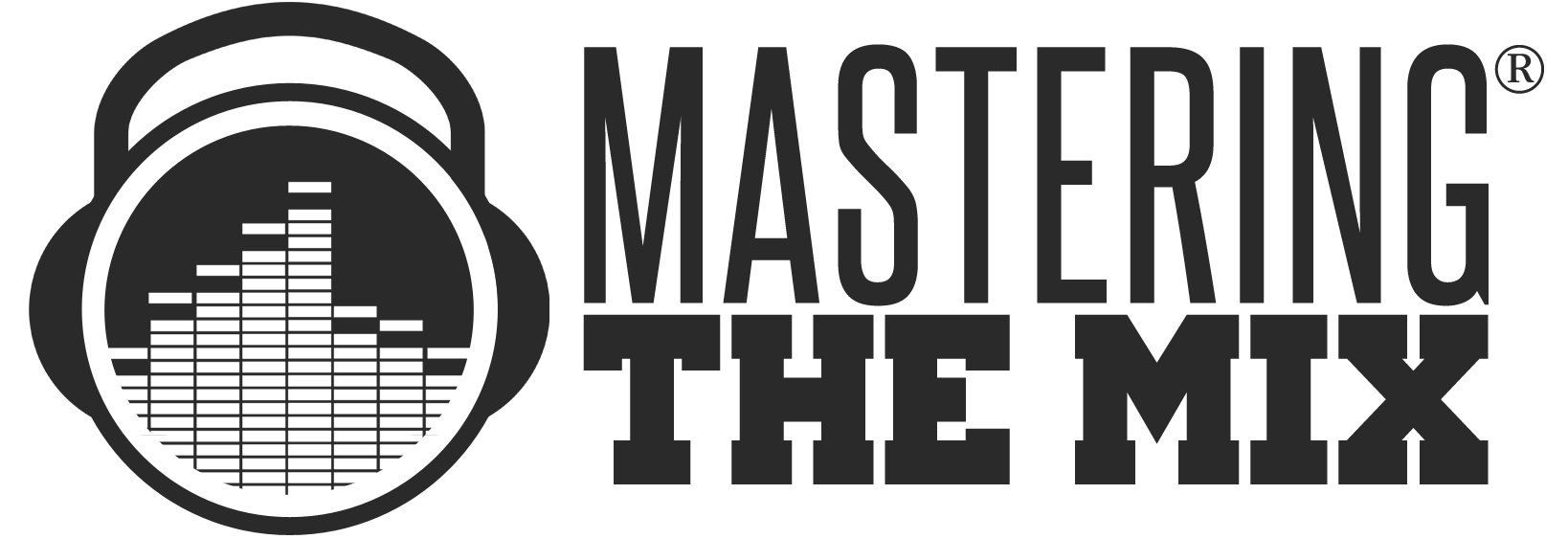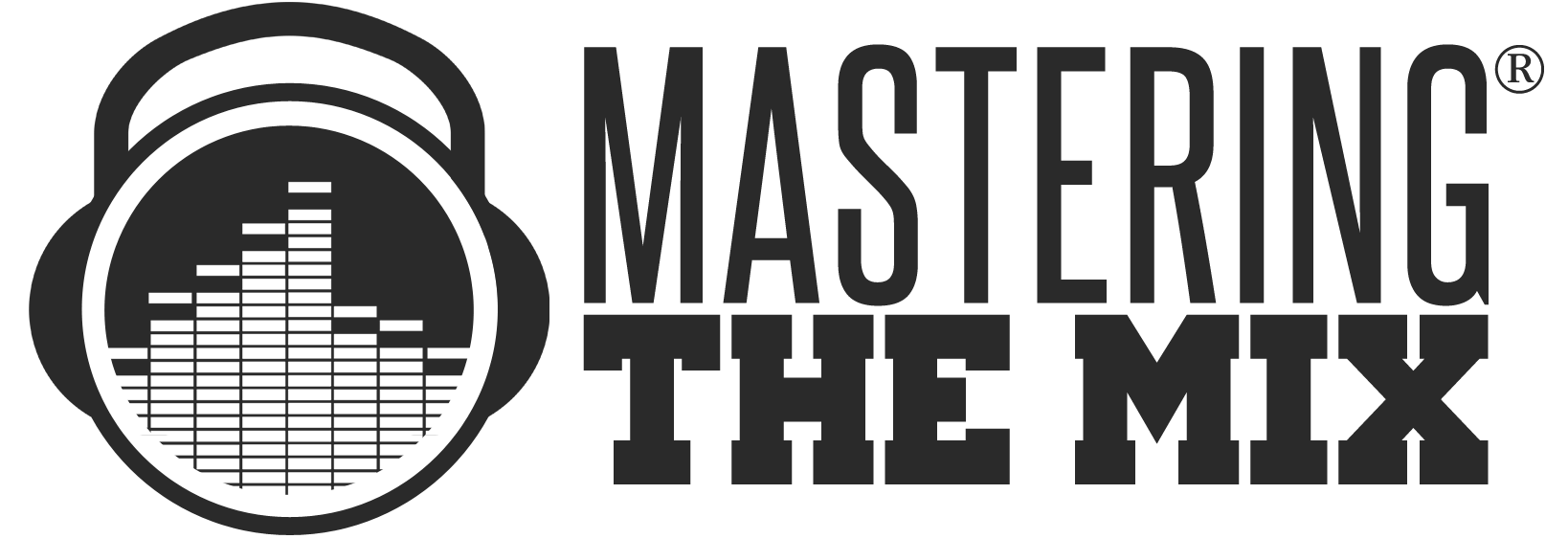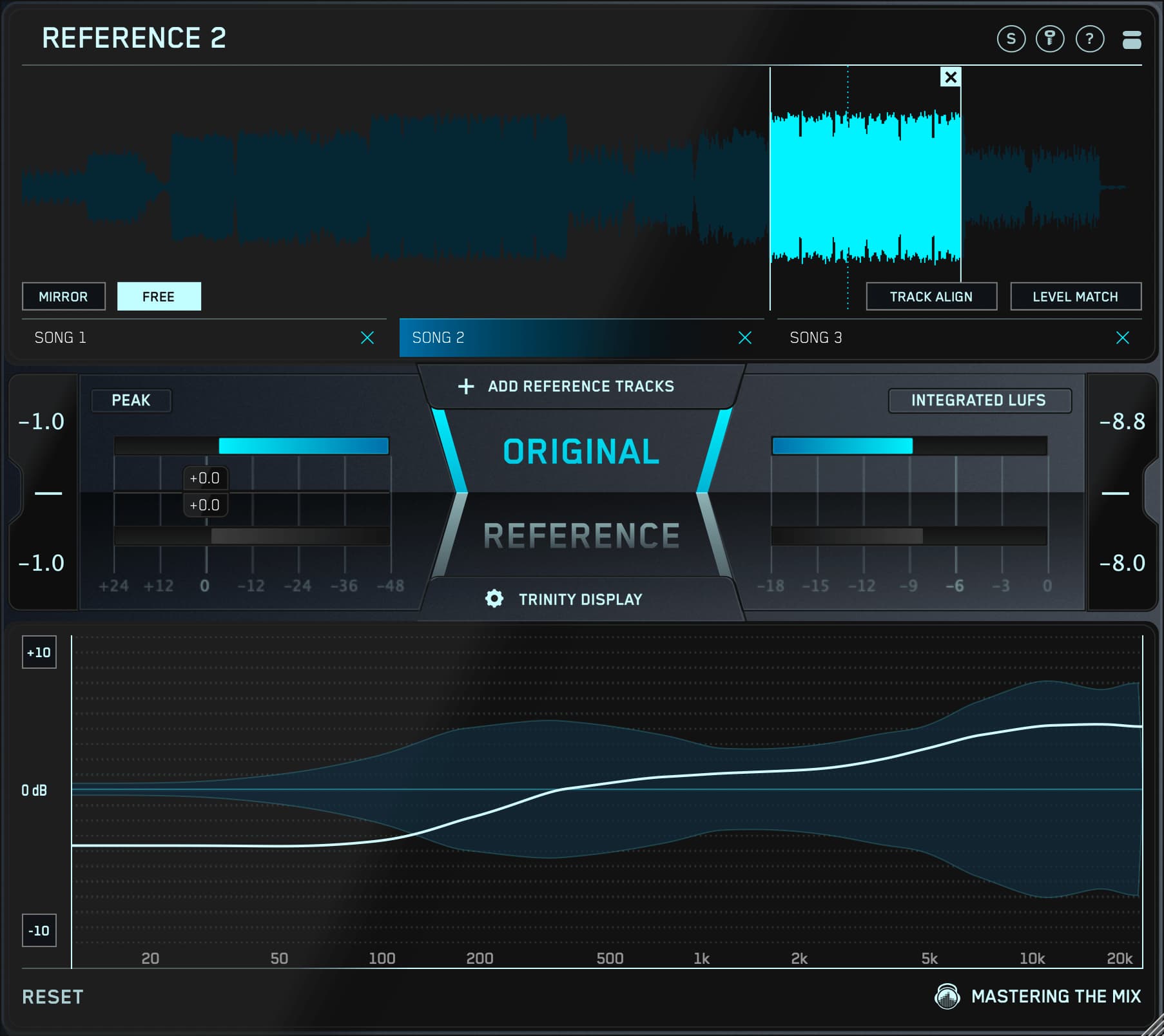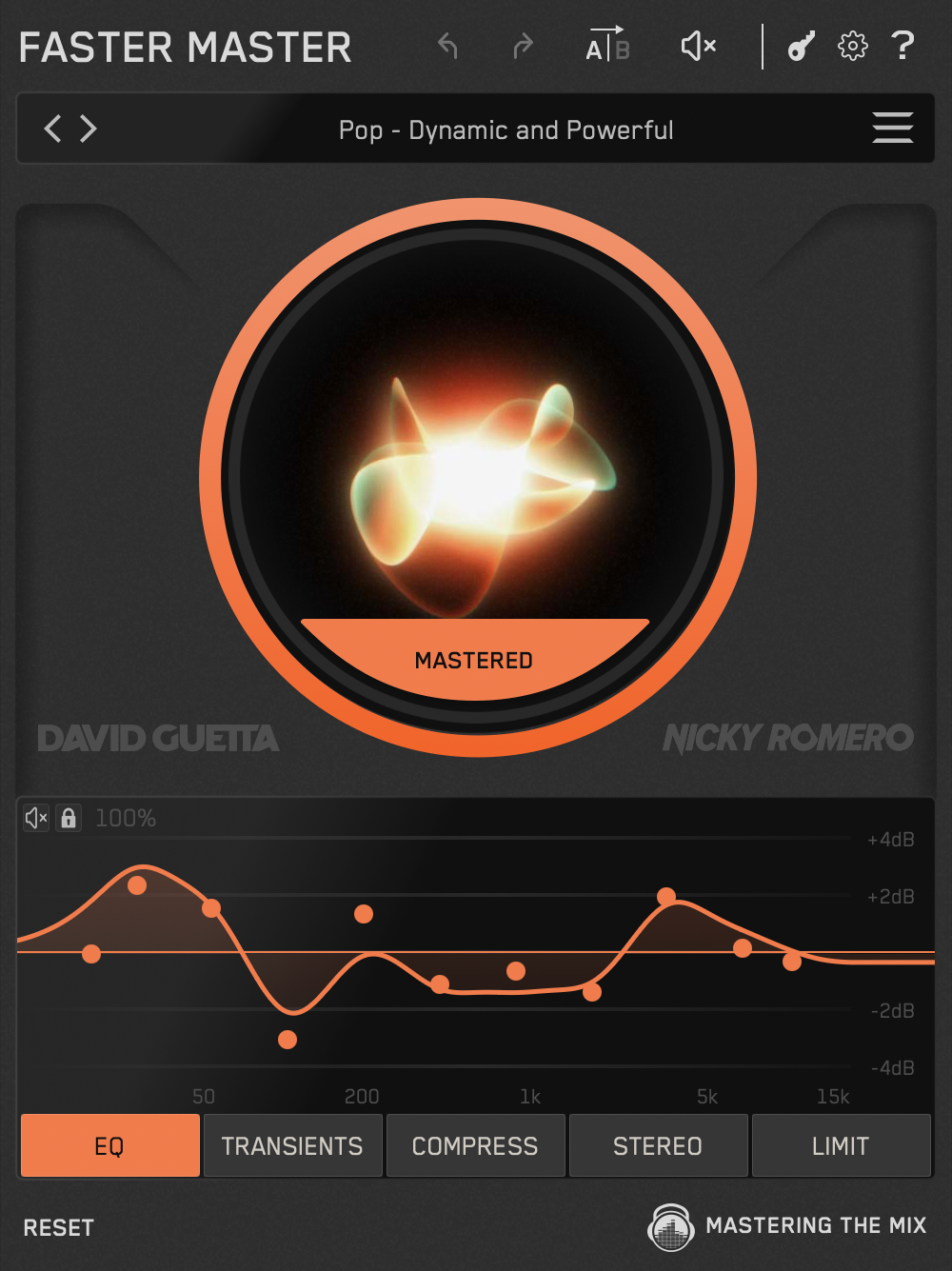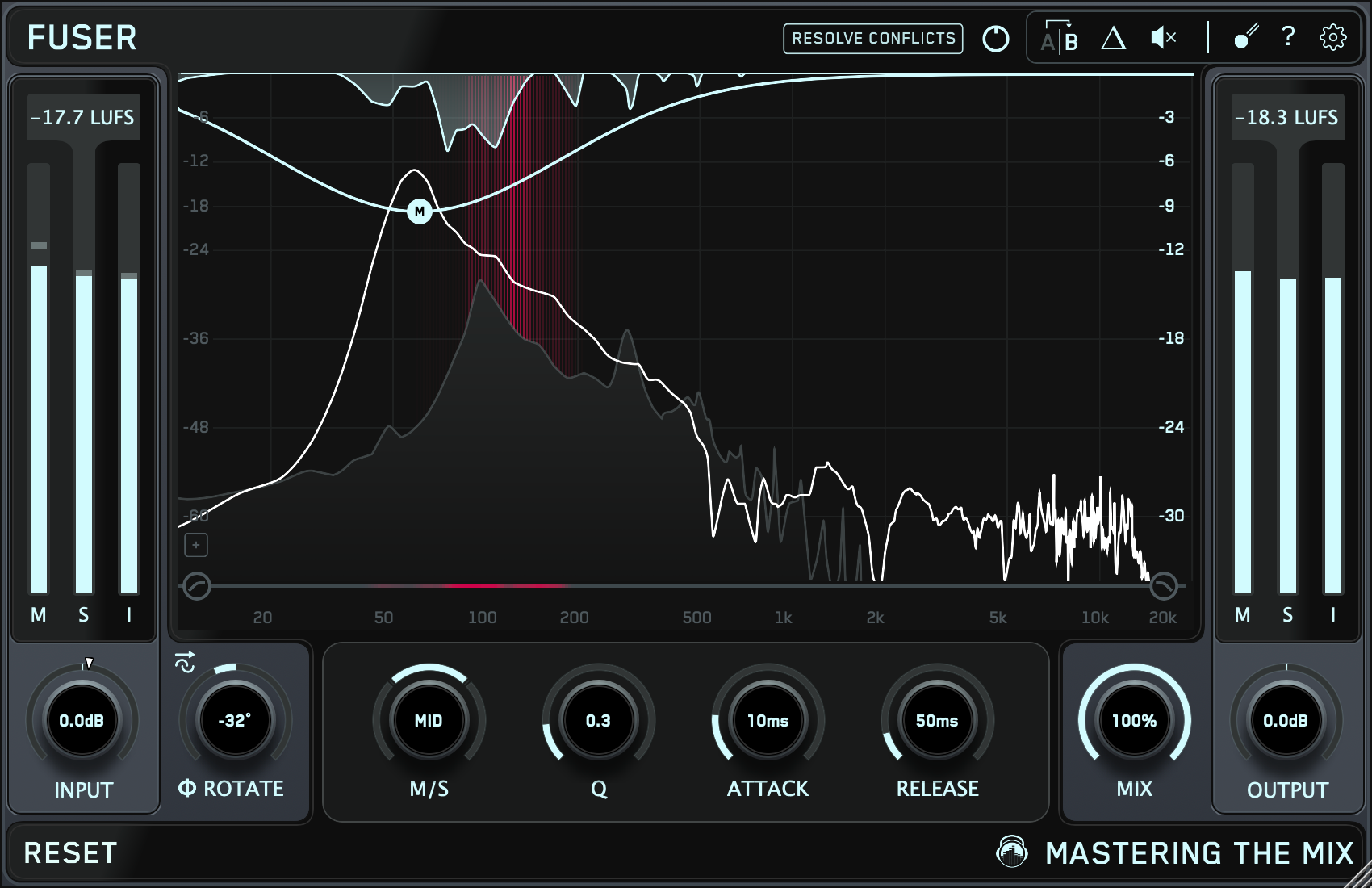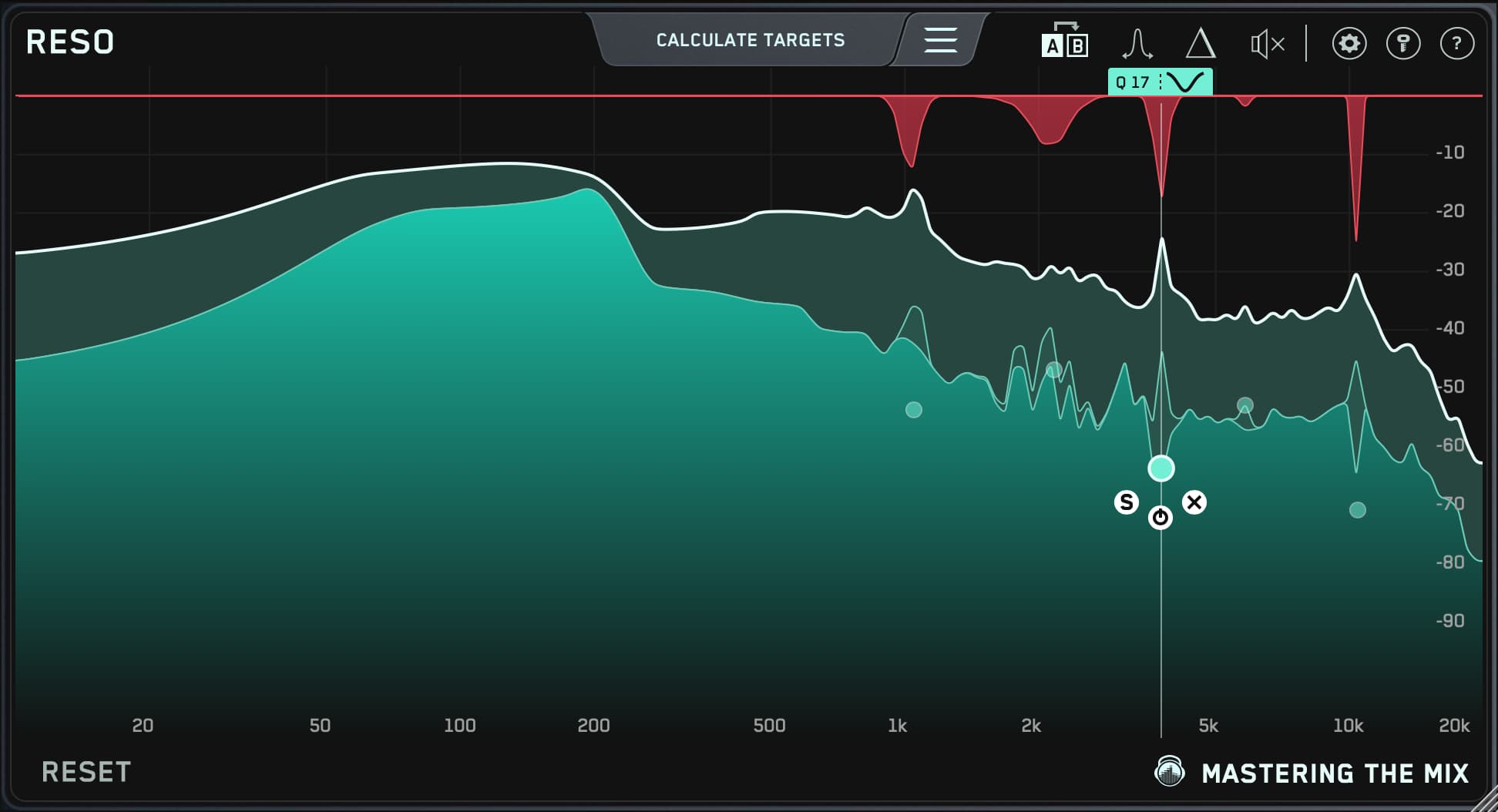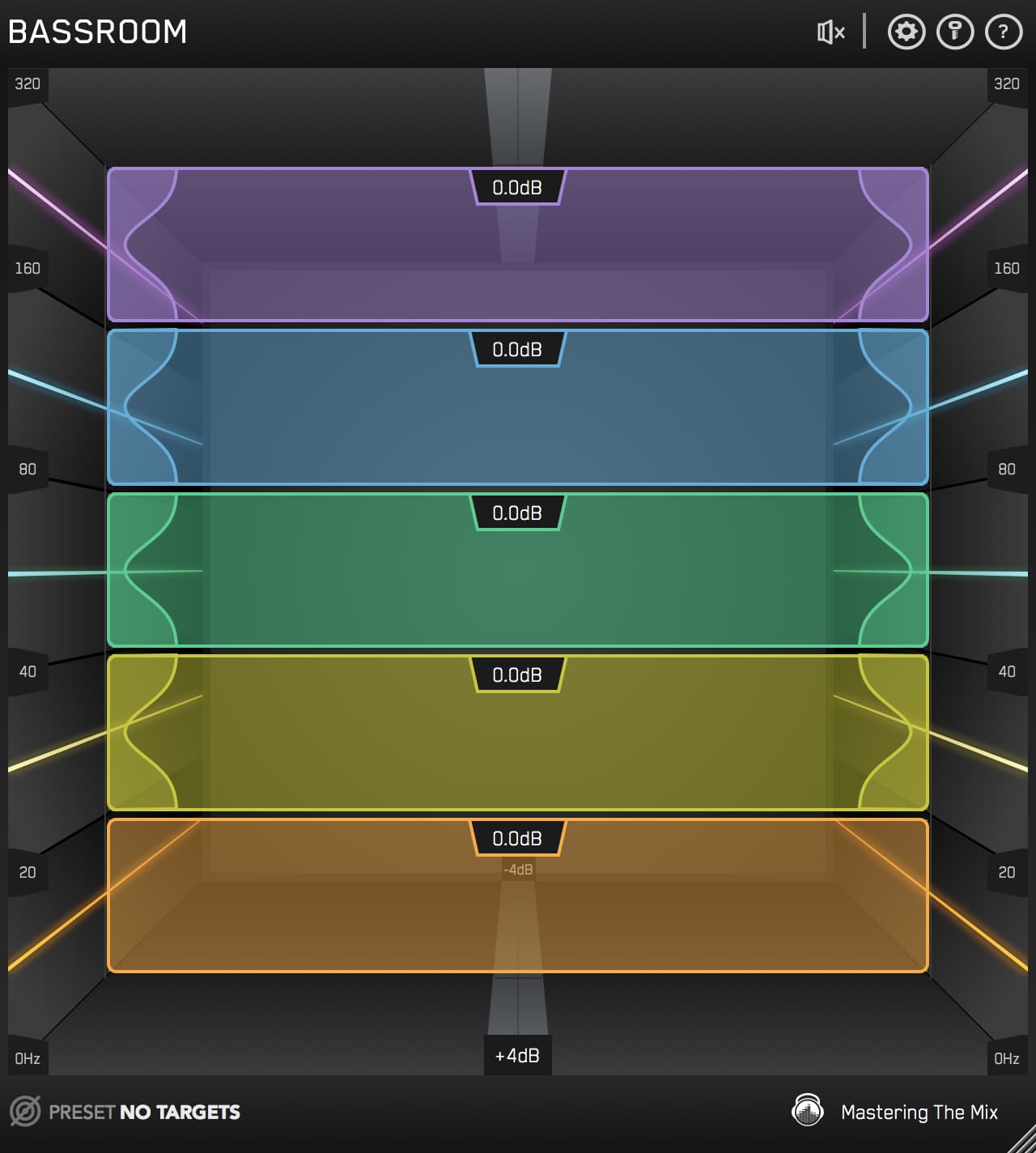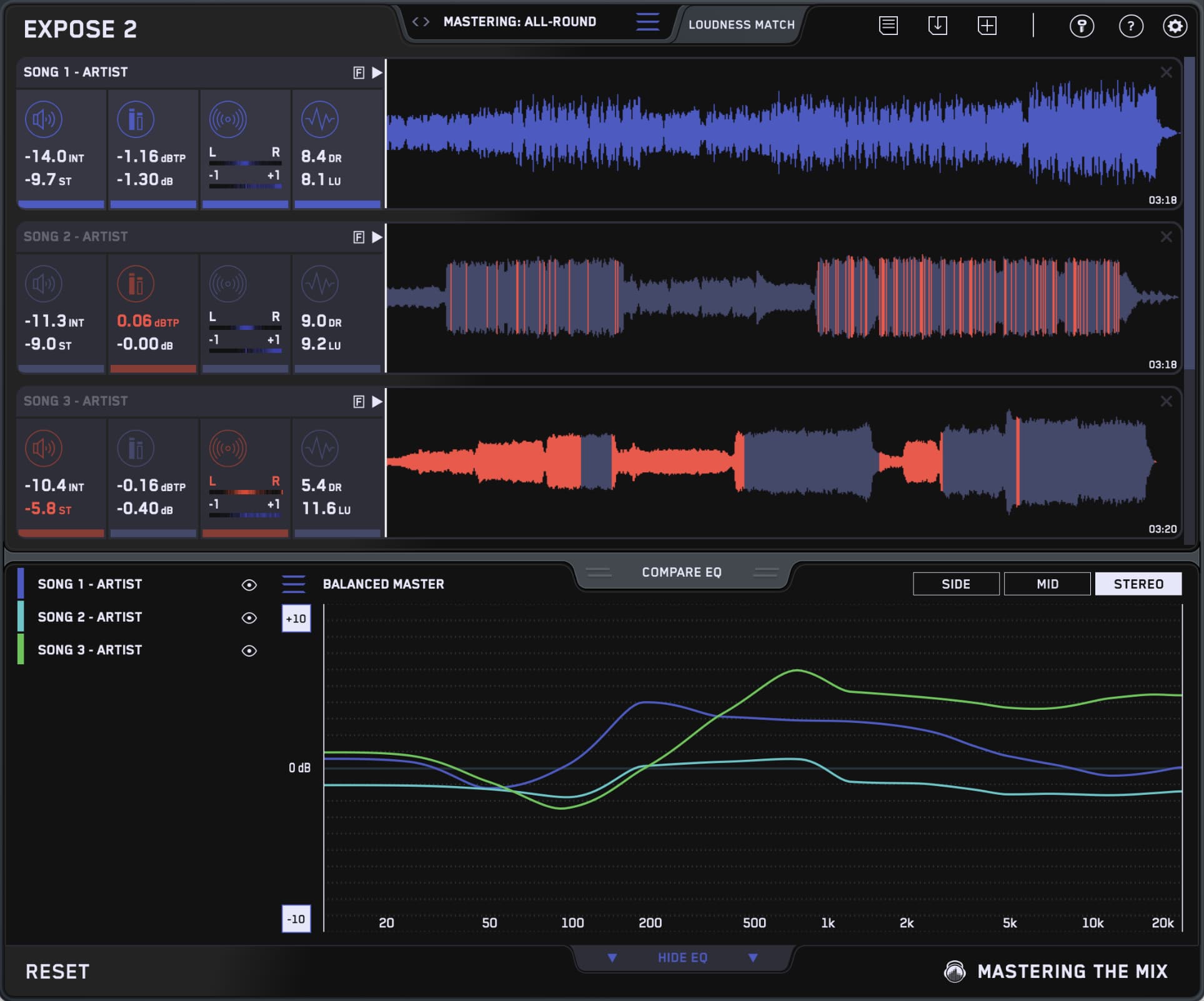Mixing on headphones used to be the backup plan. Today, it’s a full-blown superpower — if you know how to do it right. Whether you’re producing in a small room, traveling, or just prefer cans over monitors, this guide gives you everything you need to nail pro-quality mixes using headphones.
We’ll break down how to choose the right gear, avoid the biggest mistakes, and use powerful tools that help you make confident, accurate mix decisions — wherever you are. From stereo imaging to low-end clarity, translation to tonal balance, this blog is your ultimate blueprint for headphone mixing success.
If you want pro results without a treated studio, you’re in the right place.

Headphones vs. Monitors: What’s Really Different?
Let’s get one thing straight — mixing on headphones isn’t worse than mixing on monitors, it’s just different. Understanding these differences is the key to turning your headphones into a precision mixing weapon.
When you’re listening on monitors, sound waves interact with your room before hitting your ears. You get natural reflections, subtle phase interactions, and that crucial “crossfeed” — where each ear hears a bit of both channels. It’s how we perceive width and depth in a mix.

Headphones, on the other hand, deliver audio directly into each ear. No room, no reflections, no crossfeed. This results in a hyper-wide stereo image, exaggerated panning, and an often unbalanced frequency response — especially in the low end.
That’s why mixes done purely on headphones can sound amazing in your DAW… and totally off on other systems.
But here’s the good news: once you understand these challenges, you can compensate for them. In fact, with the right techniques and tools (which we’ll cover), you can use headphones to uncover microscopic mix issues you might miss on monitors — and make decisions with surgical precision.
So don’t let anyone tell you headphone mixing is inferior. It just requires a smarter approach — and you’re about to learn it.

Choosing the Right Headphones for Mixing
Your mix is only as accurate as what you’re hearing — and not all headphones are built for the job. If you’re still mixing on consumer-grade cans with a bass boost, you’re flying blind.
For critical listening, open-back headphones are the way to go. They offer a more natural frequency response and let sound pass through the earcups, reducing pressure buildup and resonance. The result? A more speaker-like experience that’s detailed and honest.
Top-tier options like the Sennheiser HD 800 S, Beyerdynamic DT 1990 Pro, and Audio-Technica ATH-R70x have earned their place in countless pro studios. They deliver flat, neutral tones that make it easier to judge EQ moves, stereo imaging, and reverb tails with confidence.
Working on a tighter budget? The Sennheiser HD 560S and AKG K612 Pro are both excellent entry points with impressive clarity for their price.
 Just remember: even great headphones have limitations. That’s why headphone calibration tools like SoundID Reference are worth their weight in gold. They flatten out the frequency response of your specific headphone model, helping you make decisions that translate beautifully across all systems.
Just remember: even great headphones have limitations. That’s why headphone calibration tools like SoundID Reference are worth their weight in gold. They flatten out the frequency response of your specific headphone model, helping you make decisions that translate beautifully across all systems.
With the right pair on your head and the right calibration in place, you're not just hearing your mix — you're hearing the truth.
Supporting Gear: Why a Great Headphone Amp Matters
Even with the best headphones on the market, your sound is only as good as the signal driving them. That’s where a high-quality headphone amplifier comes in — and it can make a *huge* difference.
Most built-in headphone outputs on audio interfaces just don’t have the clarity, power, or precision needed for detailed mixing. They can distort at higher volumes, color your tone, or fail to properly drive high-impedance headphones — all of which lead to unreliable mix decisions.

Enter dedicated headphone amps. These units deliver ultra-clean power and stunning detail. The Rupert Neve RNHP is a favorite for its pristine, reference-grade sound. The Little Labs Monotor gives you powerful monitoring features with superb clarity. Want the luxury experience? The SPL Phonitor 2 even simulates speaker crossfeed for a more natural stereo image.
Need something portable and budget-friendly? The Apogee Groove is a great choice for laptop setups, offering brilliant D/A conversion and a solid headphone amp in a tiny USB form.
Great gear isn’t about flexing — it’s about accuracy. A proper amp ensures your headphones are performing at their best, so you can hear every transient, tweak EQ with precision, and trust your low-end decisions. Combine that with solid headphones and calibration, and you’ve got a monitoring setup that competes with far more expensive studio rigs.

Set Your Environment Up for Success
Your headphones might be dialed in, but if your environment isn’t working with you, it’s working against you. Distractions, listening fatigue, and poor habits can sabotage even the most precise setup.
Start by choosing a quiet space where you can focus. Even though headphones isolate your ears, external noise can still mess with your concentration and perception. Turn off notifications, dim the lights, and create a vibe that supports deep, focused listening.
Next, monitor at the right volume. It’s tempting to crank it up, especially when a mix is hitting right — but mixing too loud leads to fatigue, skewed EQ choices, and long-term ear damage. Aim for 73–76 dB SPL (C-weighted) if you're in a small space. A good rule of thumb? If your ears feel “warmed up” after a session, you were probably mixing too hot.

Take breaks often. Every 45 minutes, step away and let your ears reset. You’ll come back with fresh perspective and spot issues you missed before. This simple habit will level up your decision-making more than any plugin.
And here’s a pro tip: when tweaking reverbs and delays, solo those effects through headphones. You’ll catch subtle tails and phase issues you might miss on monitors. It’s one of the headphone's biggest strengths — use it.
A smart setup isn’t just about gear — it’s about habits. Build the right environment, and your mixes will instantly get tighter, more balanced, and more consistent across every playback system.

Avoid These 5 Common Mistakes When Mixing on Headphones
Mixing on headphones gives you surgical precision — but it also opens the door to some sneaky pitfalls that can wreck your mix. The good news? Once you know what to look out for, they’re easy to avoid.
1. Hard Panning
On speakers, panning feels natural because of crossfeed — both ears hear both channels. But on headphones, hard panned elements sound like they’re glued to the sides of your head. It’s jarring and unnatural. Keep extreme panning to a minimum, or use subtle delays and stereo widening to smooth things out.
2. Overhyping the Lows and Highs
Headphones often exaggerate the extremes of the frequency spectrum. This can lead to overly scooped mids, harsh treble, or weak, muddy low-end. Use reference tracks (more on that soon) and tools like MIXROOM to keep your tonal balance on point.
3. Relying on One Pair of Headphones
Even the best headphones have blind spots. Always cross-reference your mix on other systems — your car, Bluetooth speakers, earbuds. This helps you catch translation issues early and fix them fast.
4. Ignoring Fatigue
Headphones press sound directly into your ears. That’s great for detail, but brutal over time. Fatigue dulls your high-end perception and skews your sense of balance. Take breaks, and don’t trust your ears when they start to feel tired.
5. Mixing Too Loud
This one’s a mix killer. Loud headphone monitoring doesn’t just hurt your ears — it tricks your brain. Everything sounds more exciting and full, even if it’s not. Keep levels conservative and let your mix earn its energy through balance, not volume.
Avoid these traps, and you’ll stay in control of your mix from the first fader move to the final bounce. Up next: the tools that help you fix these issues automatically.

Headphone Optimization Software You Should Be Using
Even with top-tier headphones, you're still dealing with physics — no crossfeed, skewed imaging, and uneven frequency response. That’s where headphone optimization software steps in and saves the day.
These tools simulate the experience of mixing on speakers in a well-treated room, giving you more accurate imaging, better depth perception, and flatter frequency response. If you’re serious about mixing on headphones, this software isn’t optional — it’s essential.
Waves Nx offers immersive 3D room modeling and head tracking to simulate mixing in a pro studio. It’s ideal if you want to hear your mix “out in front” instead of stuck in your head. Bonus: it includes EQ calibration for specific headphone models.
Sonarworks SoundID Reference is a game-changer for frequency accuracy. It flattens the response of your specific headphone model, helping you make better EQ and balance decisions. You’ll be shocked at how different your mix sounds after calibration — in the best way.
112dB Redline Monitor is another favorite, providing crossfeed emulation and adjustable speaker positioning. It’s lightweight on CPU and great for long mixing sessions without ear fatigue.
No matter which tool you choose, the result is the same: your mixes will translate better, sound more balanced, and feel more like you’re working in a proper control room — even if you’re mixing from a laptop in bed.
Combine one of these with high-quality headphones and good monitoring habits, and you’ll unlock the full potential of headphone mixing. This is the secret sauce pros use when working on the go — and now, you can too.

Tools That Make Mixing on Headphones Way Easier
Let’s be honest — mixing on headphones without the right tools is like flying blind. The tiniest tweak can throw things off, and second-guessing every EQ move gets exhausting fast. That’s where smart, assistive plugins come in to guide your decisions and boost your confidence.
MIXROOM is your secret weapon for nailing clarity and balance in the mids and highs. It intelligently suggests EQ targets based on your audio and genre, helping you dial in a pro sound — even if your headphones slightly exaggerate the top end. Use it on vocals, synths, guitars — anything that needs definition and air.
BASSROOM takes the guesswork out of low-end mixing, which is notoriously tough on headphones. It gives you low-frequency targets based on real-world mix data. Just match the visual EQ guide, and you’ll land a tight, controlled bottom end that translates on every system.
Got muddy mids or masking issues? FUSER helps you solve conflicts between channels with intelligent mid/side ducking and phase alignment. If your kick and bass are fighting, FUSER helps them work together — not against each other.
RESO helps identify and tame harsh resonances, which headphones can exaggerate. It shows you exactly where the issues are and how much to reduce — dynamically and transparently.
And before you bounce your final mix, run it through EXPOSE 2. It checks for loudness, stereo issues, true peak overs, and EQ problems — all based on your distribution goals. It's the ultimate translation checker, especially useful when your primary monitoring system is headphones.
These tools don’t just make mixing on headphones easier — they make your results more reliable. Less guesswork, more flow, and better mixes, faster. That’s the kind of upgrade every producer needs.
Reference Like a Pro (Even in Headphones)
Here’s a game-changing truth: the fastest way to improve your mix is to compare it directly to a professionally mixed and mastered track in your genre. But here’s the catch — you’ve got to do it right, especially on headphones.
Start by loading up REFERENCE on your master channel. Drop in one or two tracks you admire — ideally in the same genre, tempo, and energy range. Loop a section like the chorus, and make sure you’re not just listening — you’re *analyzing*.
REFERENCE automatically matches the perceived loudness of your track to the reference. This is crucial. Our ears perceive louder mixes as better, even if they’re not. Loudness matching removes that bias and helps you make honest comparisons.
Use the Trinity Display inside REFERENCE to check three things:
Tonal Balance: The Level Line shows you where your mix differs from your reference. Too much low-end? Scooped mids? REFERENCE highlights exactly what to fix.
Stereo Width: Get a visual snapshot of how wide your mix is across the frequency spectrum. Headphones tend to exaggerate width, so this helps you avoid mixes that fall flat on speakers.
Punch: The Punch Dots show how your dynamic range compares — especially in the low end. If your mix is over-compressed (or not enough), you’ll see it instantly.
This isn’t about copying — it’s about calibrating your ears and training your instincts. With REFERENCE as your compass, your mixes will start sounding less like bedroom demos and more like major label releases.
When in doubt, A/B it out. Every pro does it — and now you’ve got the tools to do it right on headphones.

Cross-Checking and Final Checks Outside Headphones
Even with the perfect headphone setup, no mix is truly finished until it’s passed the translation test. That means checking how it sounds outside your headphones — in the wild.
Why? Because people don’t just listen on studio cans. They hear music on laptop speakers, Bluetooth earbuds, cars, TVs, and party speakers. Your job is to make sure your mix hits hard and feels right *everywhere*.
Start with your car. It’s one of the most honest test environments out there. If the kick disappears or the vocal is buried, you’ll hear it instantly. Next, check your mix on a cheap Bluetooth speaker. Does the energy still come through? Can you feel the low end, or does it vanish?
Also try referencing on earbuds — the kind your audience is most likely using. These highlight midrange imbalances and excessive reverb better than anything else.
If you spot issues, jump back into your session and make small, targeted fixes. Don’t overhaul the entire mix. Use the notes from your translation tests to guide final adjustments in EQ, levels, or stereo width.
For a final technical check, run your mix through EXPOSE 2. It will flag true peak issues, phase problems, dynamic range issues, and even suggest tweaks based on whether your track is heading to Spotify, Apple Music, or a club system.
This final step is what separates good mixes from great ones. Don’t skip it. The best mixes are the ones that move people — no matter how they’re listening.

Troubleshooting Bad Mix Translation
You finish a mix in your headphones, bounce it out, play it on your phone... and it falls apart. The bass is too loud, the vocal’s buried, and the stereo image sounds weird. Don’t panic — it happens to everyone. The trick is knowing how to fix it fast.
Here are the top culprits behind poor mix translation — and how to tackle them like a pro.
Unbalanced Tonal Spectrum: If your mix sounds thin or muddy on other systems, chances are your tonal balance is off. Fire up MIXROOM and compare your mids and highs to your favorite reference. It’ll guide your EQ choices with smart, genre-specific suggestions.
Inconsistent Low-End: Bass that booms on headphones but vanishes on speakers? Classic translation issue. Use BASSROOM to match your low frequencies to pro-level references — it takes the guesswork out of getting that clean, controlled bottom end.
Vocal Disappears in the Mix: If your vocals don’t cut through, it’s often a level, EQ, or masking problem. Try FUSER to reduce midrange competition between vocals and instruments. Then gently automate vocal levels to keep them front and center throughout the song.
Stereo Image Falls Apart: A mix that sounds wide in headphones might collapse on mono systems. Double-check your panning and stereo width with REFERENCE, and always test in mono using a tool like LEVELS or your DAW’s mono switch.
Technical Red Flags: Run your final bounce through EXPOSE 2 before uploading or sending to mastering. It will flag any issues with loudness, clipping, phase, or codec distortion — things that are easy to miss in headphones but critical for release.
Bad translation isn’t a failure — it’s feedback. With the right tools and a quick troubleshooting routine, you can fix issues fast and make your mix bulletproof across any system.

Conclusion: You Can Mix on Headphones Like a Pro
The idea that you *can’t* mix professionally on headphones is officially outdated. With the right approach, the right tools, and a sharp ear, you can craft mixes that punch, translate, and compete with the best — no treated room required.
You’ve now got the full blueprint: how to pick the right headphones, avoid common pitfalls, optimize your environment, reference properly, and use smart plugins like MIXROOM, BASSROOM, FUSER, and REFERENCE to elevate your sound. Add in translation testing and workflow tweaks, and you’ve got everything you need to deliver radio-ready mixes from anywhere.
So whether you're on the road, in a bedroom studio, or just prefer the intimacy and detail of headphones — own it. You’re not compromising. You’re mixing smarter.
Bonus: Headphone Mixing Quick Checklist
Want to make sure your headphone mix is on point every time? Here’s a quick-fire checklist you can refer to before bouncing your final mix. Keep this handy and run through it before every session wrap-up:
• Are you using open-back headphones with a flat response?
• Is your headphone amp or DAC clean and powerful enough?
• Have you calibrated your headphones using SoundID or similar?
• Are you avoiding hard panning and checking for stereo balance?
• Did you use reference tracks with matched loudness via REFERENCE?
• Is your low-end controlled and clear using BASSROOM?
• Did you take regular breaks to avoid ear fatigue?
• Have you checked your mix on at least two other playback systems?
• Did you run your final bounce through EXPOSE 2 for technical issues?
• Does your mix still hit emotionally, even at low volume?
Nail this checklist and you’ll be delivering pro-level mixes — even with nothing more than a laptop and a pair of headphones. Print it, bookmark it, live by it.
